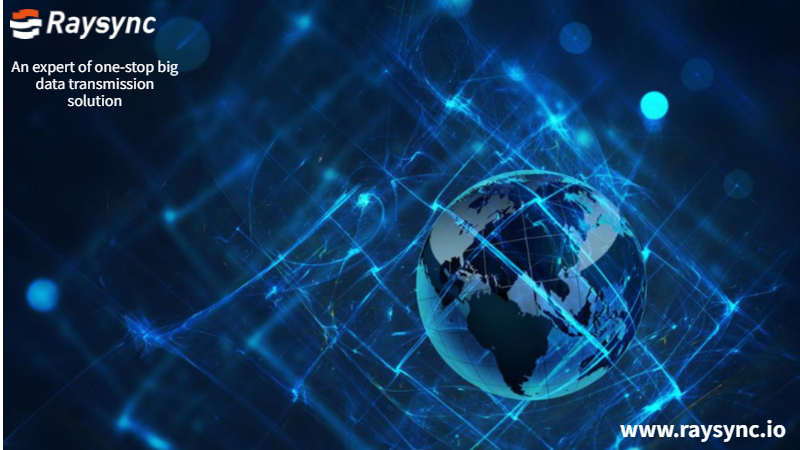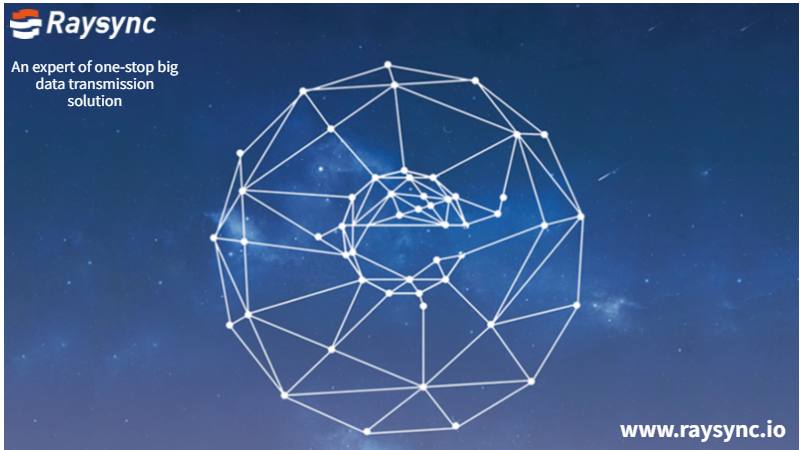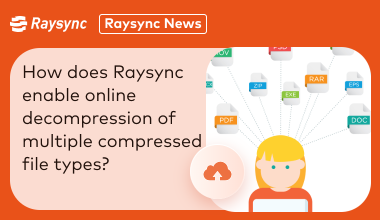Raysync Transmission: 5 Types of Data Integration You Need to Know
June 28, 2020We have been talking about data integration, but that doesn't mean we all understand it. It seems simple to talk about data integration, but when we explain the definition, we will find many different explanations. In order to avoid obscuring the concept of data integration, today we will start from the common data integration types in 5, and have a deep understanding of data integration.
The definition of data integration
According to the definition given by China Science Communication, data integration is to logically or physically concentrate data with different sources, formats, and characteristics, so as to provide comprehensive data sharing for enterprises and make data more valuable. IBM pointed out that "data integration is the integration of technology and business processes, which realizes the integration of data from different sources into meaningful and valuable information."

#1 Data Consolidation
ETL pulls data from sources, transforms it into an understandable format, and then transfers it to another database or data warehouse. The ETL process cleans, filters, and transforms data, and then applies business rules before data populates the new source.
#2 Data Dissemination
Data dissenminationj is the use of applications to copy data from one location to another. It is event-driven and can be done synchronously or asynchronously. Most synchronous data propagation supports two-way data exchange between source and target. Enterprise application integration (EAI) and enterprise data replication (EDR) technologies support data dissemination.
EAI integrates application systems for the exchange of messages and transactions. It is often used for real-time business transaction processing. The integration platform as a service (iPaaS) is a modern approach to EAI integration.
EDR typically transfers large amounts of data between databases, instead of applications. base triggers and logs are used to capture and disseminate data changes between the source and remote databases.
#3 Data Virtualization
Data virtualization is an inclusive term used to describe all data management methods, which allow applications to retrieve and manage data without technical details related to data, such as its format or physical location. Data can be viewed in one place, but cannot be stored in that place. Data virtualization can retrieve and interpret data, but it doesn't need a uniform format or a single access point.
#4 Data Federation
Technically, Federation is a form of data virtualization. It uses virtual database and creates general data model for heterogeneous data from different systems. Data is aggregated and can be viewed from a single access point. Enterprise Information Integration (EII) is a technology that supports data union. It uses abstract data to provide a unified view of data from different sources, and then presents or analyzes data in a new way through applications.
In the face of the high cost of data integration or excessive security and compliance problems, virtualization and federated authentication are good solutions.

#5 Data warehouse
Data warehouse is a strategic collection that provides all types of data support for the decision-making process at all levels of enterprises. It is a single data store created for analytical reporting and decision support purposes. Provide guidance for business process improvement, monitoring time, cost, quality and control for enterprises that need business intelligence.
The data warehouse is integrated, and the data in the data warehouse comes from scattered operational data. The required data can be extracted from the original data, processed and integrated, and unified and integrated before entering the data warehouse.
We will find that no matter which integration type is mentioned above, it reflects a key point. Data integration needs to achieve integration through data exchange between applications. Since data exchange and transfer are involved, it is suggested that you can enter two systems, namely Raysync large file transfer system and SDK integration system, and actually experience several stages of integration work.
You might also like
Raysync News
December 14, 2023Is your Google Drive not syncing with your desktop? Don't worry; it's a fixable issue. Read this guide to learn the quick and effective methods to fix the issue.

Raysync News
April 12, 2024Many compressed files are transferred to a file server. Users are unable to view or preview them. The ability to unzip files online on the server solves this problem and significantly improves the customer experience in a variety of ways.

Raysync News
June 1, 2022Automatic file transfer can help enterprises reduce support overhead and error rates, and improve efficiency. Here are 6 best automatic file transfer solutions that can help your business.